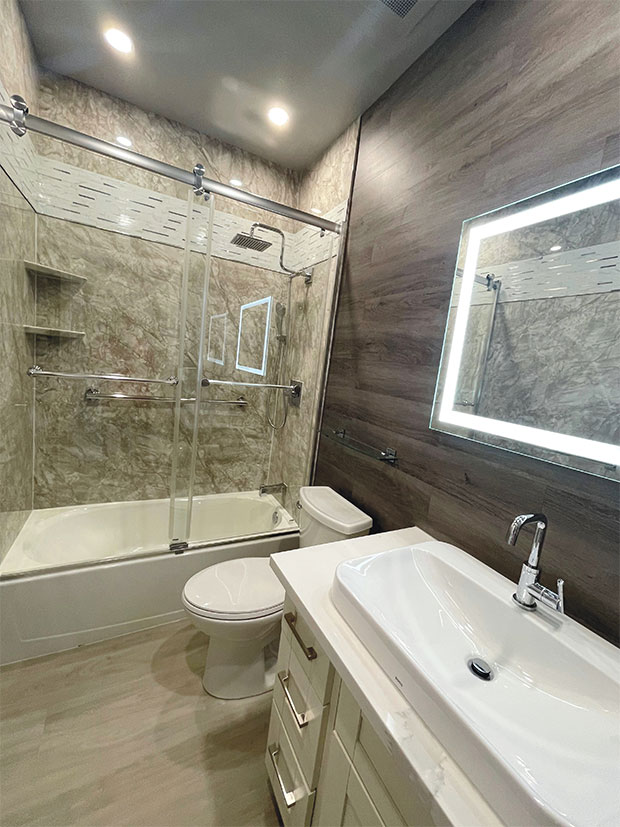Sustainable Residential Remodeling Options

In the current climate, where eco-consciousness is on the rise, eco-friendly home remodeling has gained significant traction among homeowners. Renovating your home not only improves its aesthetic value and usability but also provides you with the perfect opportunity to implement green practices that benefit the environment. As you start your remodeling adventure, you will find many options and trends that emphasize sustainability while maintaining style and comfort.
Whether you plan to do an extensive remodel or just a few minor updates, grasping the best methods is key. From choosing sustainable materials to implementing energy-efficient solutions, the choices you make during your remodel can leave a lasting positive impact. This guide will delve into topics ranging from affordable remodeling concepts and room-targeted improvements to the newest eco-friendly trends. Get set to explore an inspiring adventure of reshaping your home while being gentle on the planet.
Sustainable Home Improvement Strategies
One of the most effective sustainable remodeling strategies is to prioritize energy-saving upgrades. Incorporating energy-efficient windows, doors, and insulation during a remodel can greatly reduce your home's energy consumption. Such improvements not only improve comfort but also lower utility bills, offering savings in the long run. Additionally, think about installing eco- kitchen renovation and lighting. Seek out products that have the ENERGY STAR label, as they are designed to save energy and minimize environmental impact.
Choosing sustainable materials is another key aspect of eco-friendly home remodeling. Opt for reclaimed wood, bamboo, or recycled materials when picking flooring, cabinetry, and countertops. These materials reduce the demand for new resources and often have a lower environmental footprint. Not only do sustainable materials benefit the environment, but they also add unique character and charm to your home. Be sure to consult with suppliers who specialize in green building products to ensure you make informed choices.
Incorporating smart home technology can enhance both sustainability and functionality in your remodel. Smart thermostats, lighting controls, and energy monitoring systems enable homeowners to optimize their energy use and reduce waste. Using these technologies, you can create a more efficient living space while also making your home more convenient. Furthermore, considering renewable energy options, such as solar panels, can further enhance your home's sustainability, delivering clean energy to power your appliances and reduce reliance on fossil fuels.
Affordable Home Improvement Strategies
While considering your property makeover, it’s important to determine a realistic budget and adhere to it. Start by focusing on which tasks are most necessary to you and your family. Focus on areas that provide the best value, for example kitchen and bathroom renovations. Explore utilizing reclaimed materials or gently used furnishings that can add personality to your home and avoid the excessive price tag.
A helpful way to save money is to handle smaller improvements that make a notable impact. residential remodeling updates such as painting walls, changing light fixtures, or replacing cabinet hardware can update your space. Additionally, are these modifications budget-friendly, but they can also be done relatively quickly, reducing disruption to your daily life.
Should you have some DIY skills, think about taking on jobs like installation or removing yourself. This approach can reduce labor costs, enabling you to reallocate those resources to better materials. But, be realistic about your skills and know when to bring in a professional to make sure the job is done right, stopping expensive mistakes down the track.
Contemporary Styles in Home Design
As we advance into the new year, home design continues to evolve, adopting eco-friendly techniques and up-to-date aesthetics that reflect unique style while emphasizing sustainability. One prominent trend is the increase of open floor plans, which not only enhance the circulation of natural light but also create multifunctional spaces. Homeowners are more and more choosing layouts that enable seamless transitions between living, dining, and kitchen areas, fostering a sense of community throughout the home.
Another notable trend is the inclusion of smart home technology. Homeowners are searching for innovative ways to improve convenience and energy efficiency. Features such as smart thermostats, advanced lighting systems, and integrated appliances are becoming standard in modern renovations. These upgrades simply add worth to the home but also reduce energy consumption, coinciding with the growing emphasis on sustainability.
In addition, using sustainable materials has gained traction, with eco-conscious homeowners seeking out options that are both stylish and environmentally friendly. Reclaimed wood, bamboo flooring, and recycled materials are more frequently featured in remodeling projects. This shift not just minimizes the environmental impact but also adds unique character to spaces, showcasing how modern design can meet the needs of both aesthetics and sustainability.

